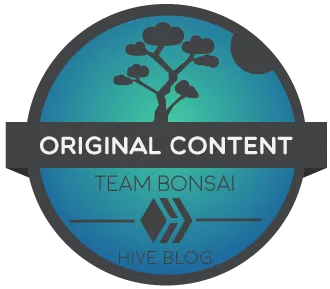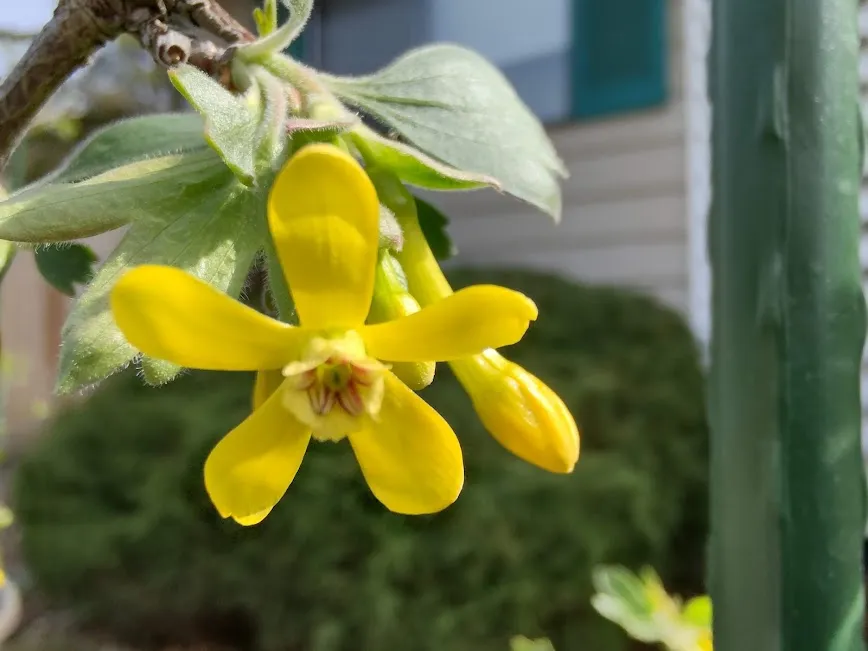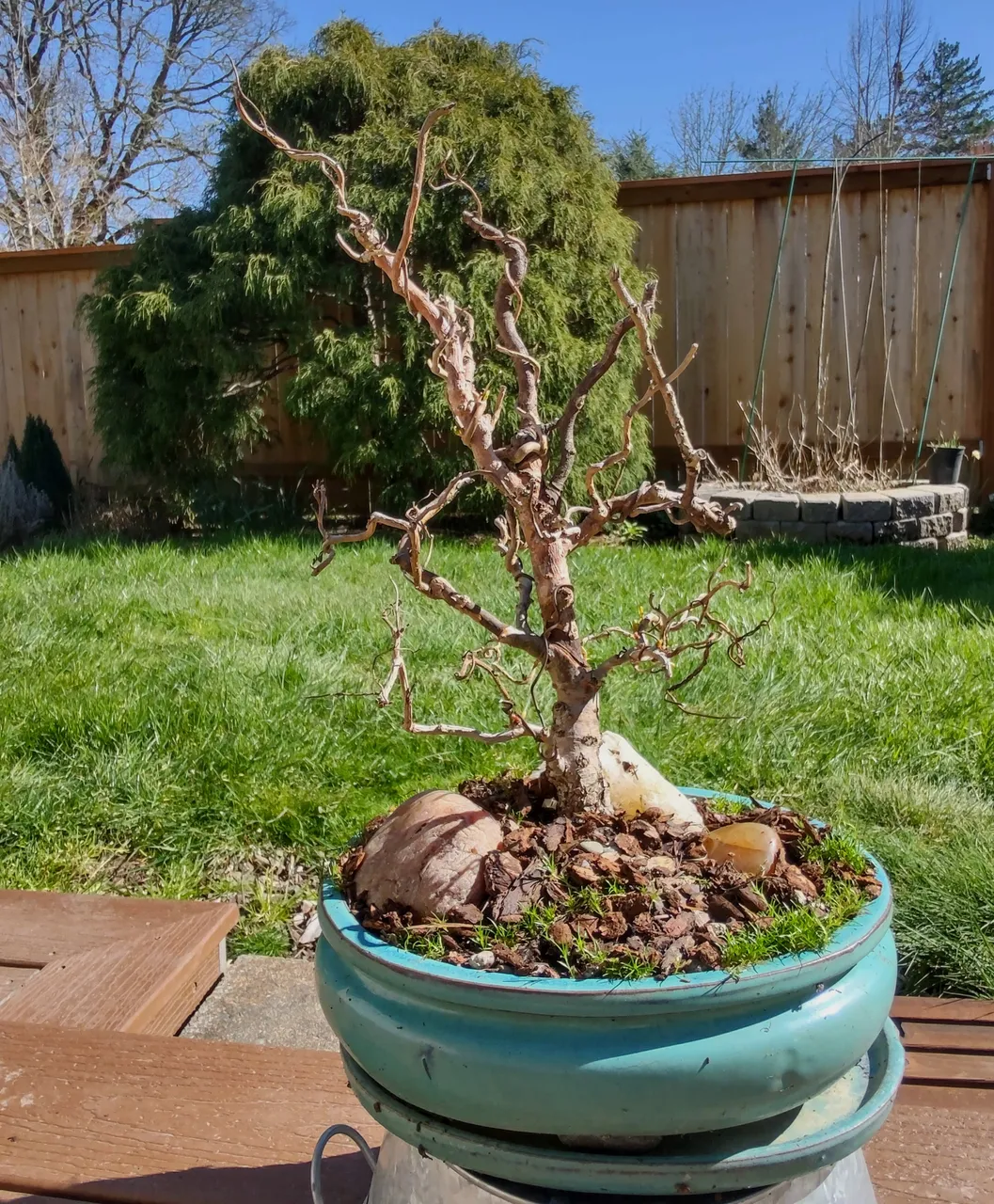
Welcome back, it's Spring.
After a long time away, I am ready to start showing off some of my bonsai trees as they push out their first new leaves of the year.
Here is an old friend of mine. I am starting to call it my zombie tree. Every year it looks all rotten and black in winter, yet it somehow comes back to life through the dark arts of a witchy spell.
I kept the tree inside my mini-greenhouse this past winter, so perhaps that helped it to survive the frost and rain.
Historical Information
ID: 0014
Nickname: Medusa
Type: Curly Willow
Age: 10 years
Grown: cutting
Last repotting: October 16, 2021
Wired: Summer 2023
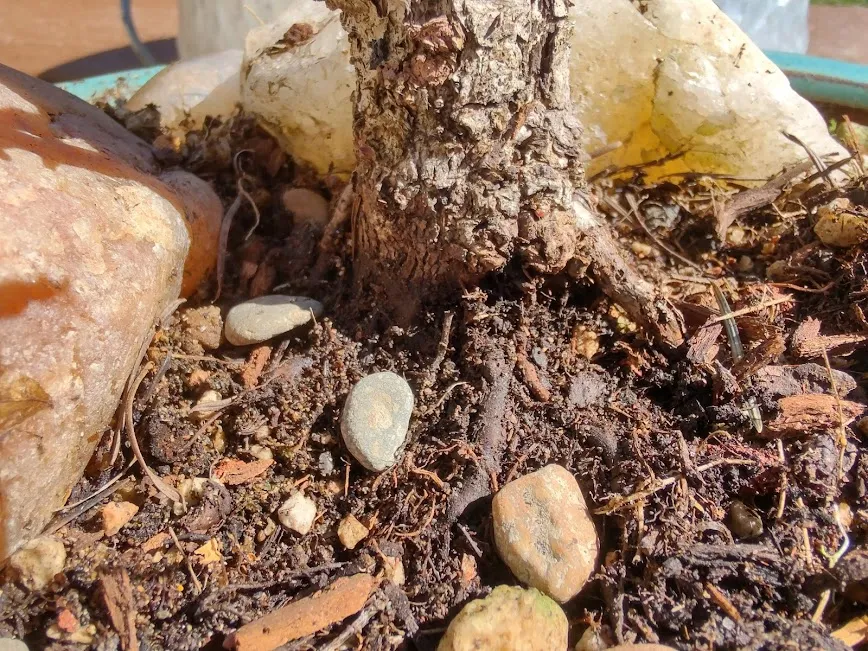
Nebari
When the tree starts waking up, the first thing I do is scrape away the top layer of soil. Remove any weeds or moss to examine the health of the roots. In bonsai, it is ideal to showcase as much of the thickest part of the rootbase as possible. A thick visible base makes the tree appear more ancient and strong.
Personally I love unearthing lots of radial roots of various sizes crawling over the surface in random directions.
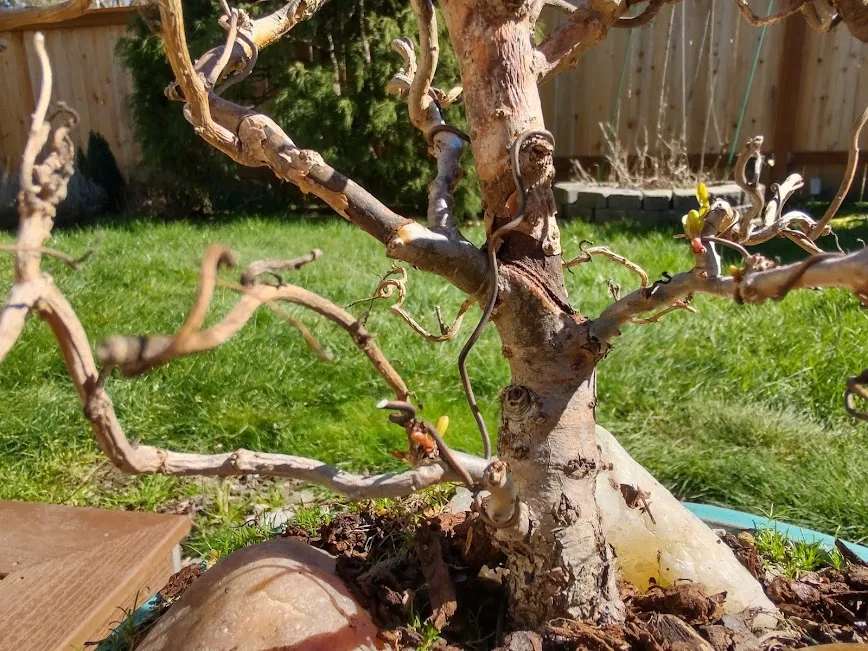
New Buds
Up from the base, I discovered signs the tree was clearly very much alive. New shoots have started to emerge from the healthy lower branches.
Does anyone know why certain plants or trees tend to dieback on top, and only focus on regrowing from the base? The only trend I have noticed is the longer and faster the shoots a tree grows, the more likely it will backbud from closer to the roots. Let me know if you have any other theories.
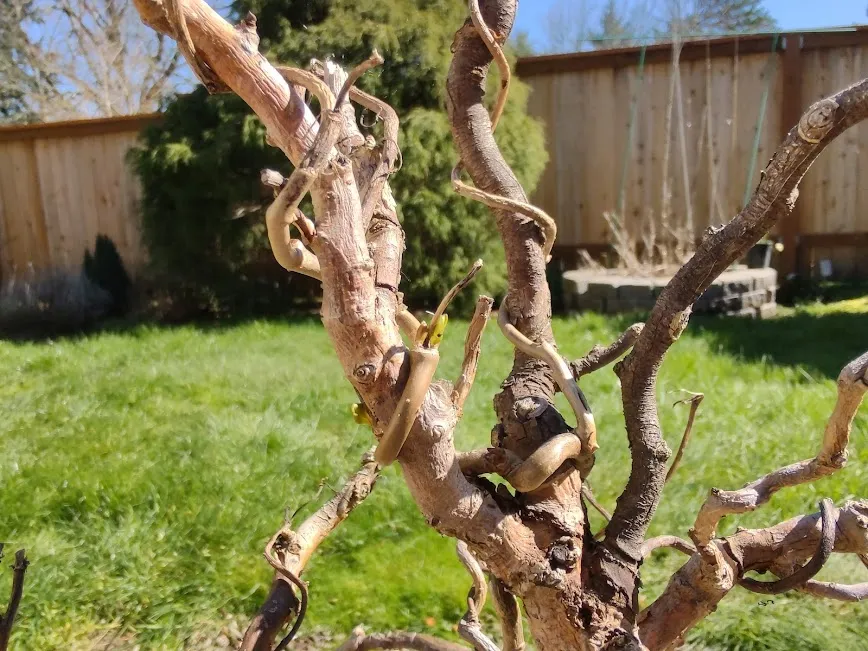
One way I have discovered over the years that I can maintain the upper level branches, is by training the lower branches to crawl up along them.
Above is an example of a neighboring branch from below that survived last winter, and it will continue to grow new stems along the upper canopy. Thus giving the appearance that the top of the tree is still old, yet alive.
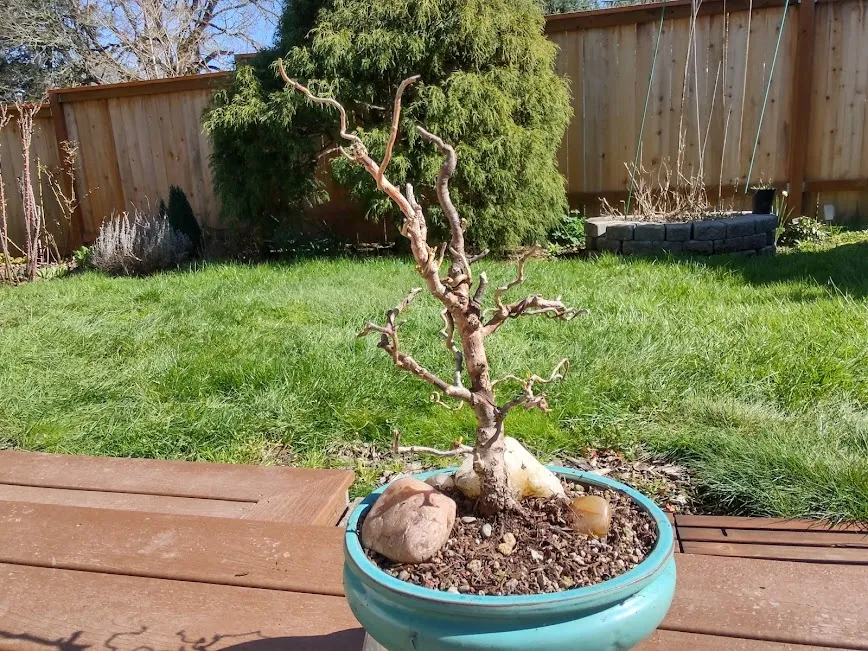
Post Winter Pruning
Pictured above is the tree after doing some light clean-up pruning. All deadwood that was thin and brittle was removed. Also removed any pieces with little hope of supporting a structure for nearby living buds to wrap over.
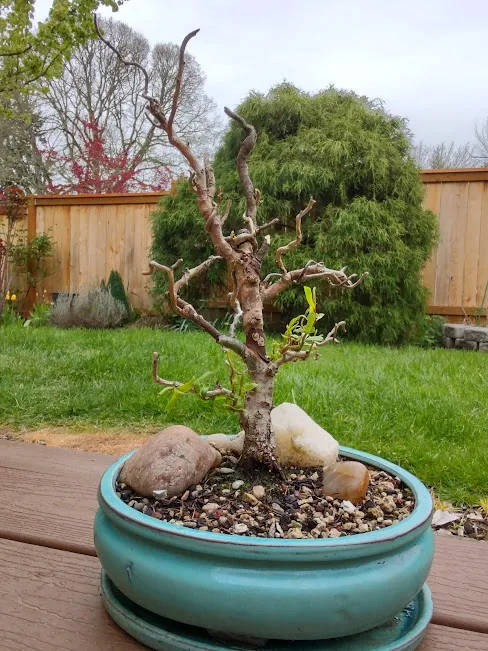
Spring Growth
A few weeks later, and as predicted, the lowest buds are shooting up the fastest. This tree is certainly not apically dominated.
The bottom branch, you might be able to make out some of twisting work I have done already. Little by little, every few days I lightly twirl the living branch under the deadwood. In time the living and the dead will merge and become as one.
Sometimes I also pinch the shoots on trees like this. Especially if lots of advantageous shoots are spurting out all along a branch, I will often pinch them to the shortest length possible which they can continue to grow from. This will focus more growth energy on the elongating branches I am training, while also thickening the branch the buds are growing from. It gives me lots of options for spreading out lots of detailed branches later on too.
Thicker branches with lots of buds tend to live longer on Willows.
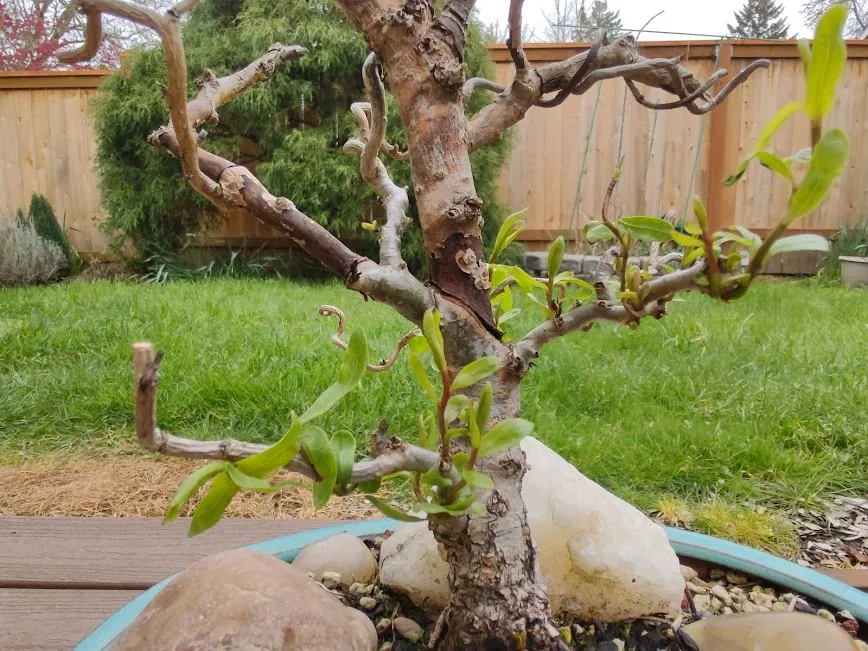
Thanks for viewing the photos and journaling about the progress on my little tree.
After all these years, I feel like I am just now getting the hang of how bonsai is done in my climate. It is really a matter of learning how the trees grow during the seasons before you do any pruning, pinching, repotting, fertilizing, wiring, or even moving the tree to a different location. The smallest action, of even watering the tree improperly can kill it in a day or two.
Learning which trees are best adapted to certain soils, microclimates, pots, and temperature conditions is key.
Photos in this post are all #originalworks by @creativetruth, unless stated otherwise.
Find me on discord and chat with other tree growers, bonsai enthusiasts, and gardeners.
